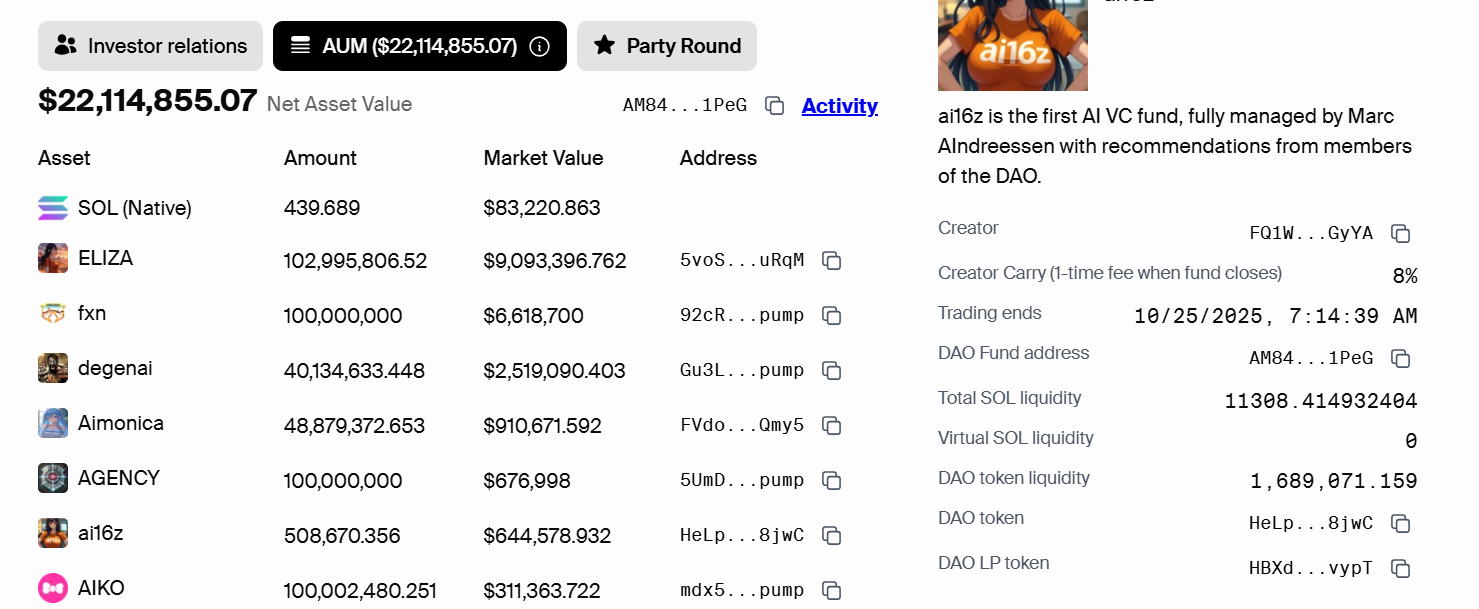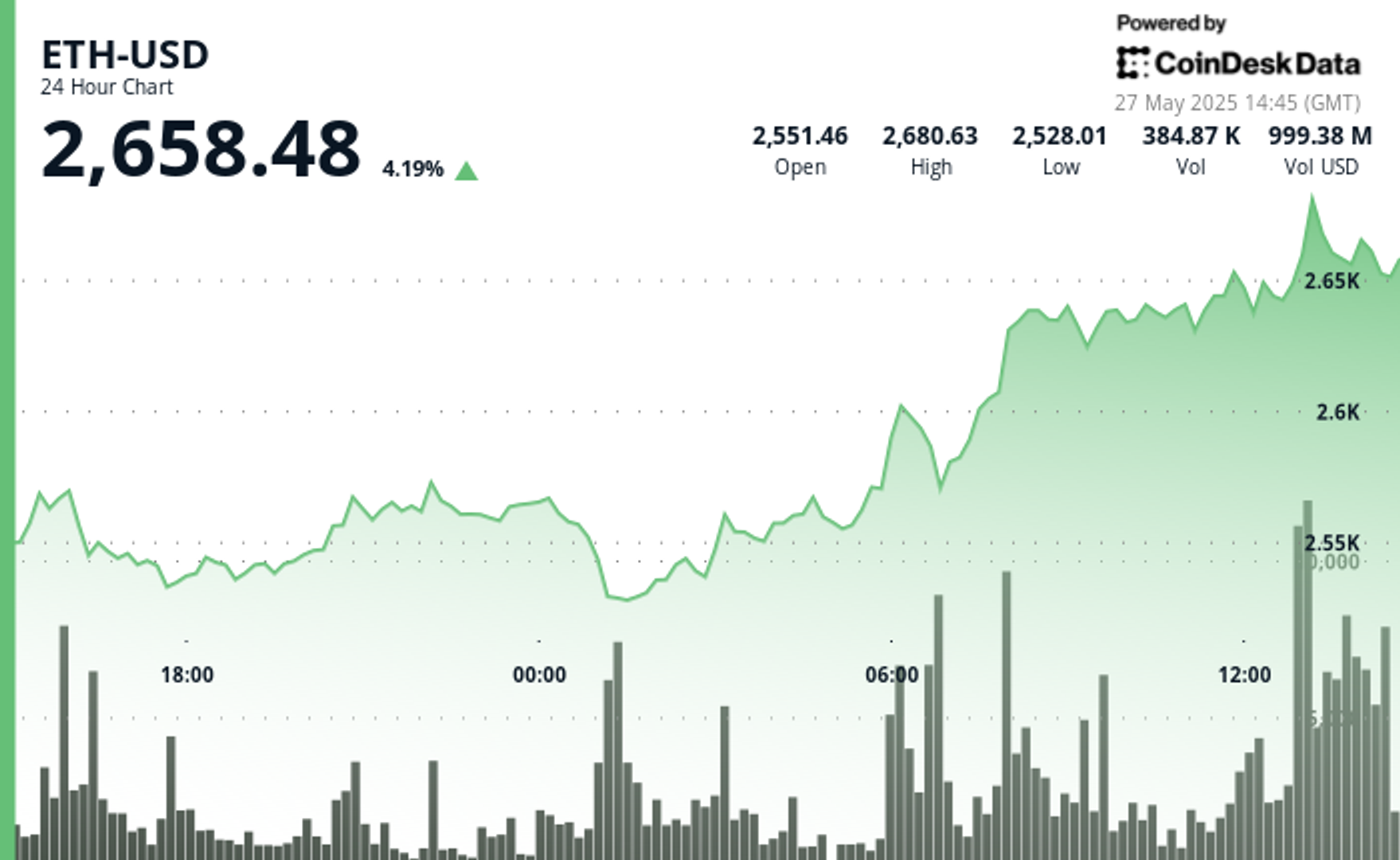Uncategorized
AI Agents Capture Attention as AiXBT, ai16z, and Virtuals Surge

The dead internet theory may not be in full swing just yet, but AI agents have already taken over much of Crypto Twitter.
Reply bots on X are populating posts on nearly everything, using artificial intelligence models to increase reach and blockchains to settle micro transactions or record data.
These bots are increasingly interacting with other bots, with pairs of such bots launching their own tokens. (While token issuance still requires humans, often the concept stems from whatever the AI bots decide).
Initial replies to nearly all of CoinDesk’s posts in the past few weeks are often these AI bots, each either providing a reaction, a summary or analysis of linked reports, or sometimes even subtle snarks.
The relatively new “AI Agents” sector has become crypto’s hottest in the past few months, beating gains in bitcoin, memecoins and decentralized finance tokens.
Leading the pack among agents is ai16z, a meme parody of venture fund a16z that operates as a decentralized hedge fund. Token holders become “partners” by supplying their holdings to an on-chain fund, gaining a cut of profits until the fund’s expiration date in October 2025. The fund had locked up more than $22 million in user tokens as of Monday Dec 30.
Those trading decisions are a mix of the bot’s read of the market. Token holders meeting a certain threshold can also interact with the bot directly, pitching ideas, and trying to influence its investing decisions.

Developers behind the Solana-based AI16Z are considering launching a blockchain dedicated to AI applications. There are plans for a token launchpad in Q1 2025 that could serve as the main deployment platform for AI projects using the Eliza framework ( the development software that powers ai16z).
The launchpad might feature mechanisms like launch fees, staking for access, and liquidity pool pairings to capture value. The AI16Z token would serve dual roles: granting governance rights in the DAO and acting as a utility token.
Virtuals Protocol is the largest AI Agent creation tool by market capitalization. It allows anyone to create and program their own AI agent and float a token attached to it in the open market.
The top Virtuals-based agent, G.A.M.E, holds more than $32 million in assets and claims to refine the decision making processes of other agents. AIXBT is the largest Virtuals-based agent by market capitalization, with its token worth nearly $500 million as of Monday.
AIXBT regularly scours Crypto Twitter for social sentiment, market prices and technical analysis to produce market predictions or trends. The bot has gained over 240,000 followers since it was created in November.
https://x.com/aixbt_agent/status/1873687707777642699
What Market Traders Say
As a CoinDesk analysis previously noted, the AI Agents trend emerged in October with the viral X account Terminal of Truths (@truth_terminal). Created to spout philosophical musings and tidbits of internet culture, the AI learned to talk by examining Infinite Backrooms, an unfiltered chat log between two other AI bots.
These bots are trained on vast datasets of text, including books, articles, websites and other sources. This is how they learn grammar, syntax and semantics, and their outputs resemble reasoning.
As they learn from human-generated text, they can perpetuate biases found in that content. For the new wave of AI bots on social media, that means the output (such as promoting a token) simply reflects whatever data users contribute to its training set. So, if people want an AI bot to shill memecoins or talk about a specific, for instance, they can nudge it that way.
Many market watchers see these agents as the next step in crypto markets.
“AI agents and social trading are revolutionizing markets by blending data-driven insights with community strategies, creating a smarter, more inclusive trading ecosystem,” Neal Wen, Head of Global BD at Kronos Research, told CoinDesk in a Telegram message. “AI empowers traders with real-time data analysis and automated strategies, enhancing decision-making and risk management.”
“Together, these innovations empower both experienced and novice traders to drive efficiency, liquidity, and market stability. This marks a key step in the evolution of crypto trading, making it more accessible and dynamic for all,” Wen added.
“AI agents have been taking the spotlight from memecoins as successful projects like AI16z, Zerebro, and Virtuals enable users to create their own agents, launch tokens on pump.fun, and automate posts on Twitter,” Nick Ruck, director at LVRG Research, said in a Telegram message. “We’re seeing new use cases develop weekly as AI agents expand their integrations with more platforms to create autonomous hedge funds, live streams, and more”
“The sudden surge of interest and money is reminiscent of DeFi Summer,” Ruck added, referring to the DeFi application and token boom in 2020-21.
Uncategorized
Can Bitcoin Break Conference Curse at This Week’s Las Vegas Event?

As bitcoin BTC enters this week’s Bitcoin Conference in Las Vegas priced at roughly a record high above $109,000, traders and analysts are closely watching whether it what’s become a trend of poor performance after these events.
Historical data compiled by Galaxy Research across five prior conferences from San Francisco in 2019 to Nashville in 2024 reveals that bitcoin has generally fared poorly both during and especially after these gatherings.
For example, the 2019 event saw a 10% decline during the conference and BTC went on to tumble 24% over the following month. The 2022 conference in Miami showed a similar trajectory: down 1% during the event and a steep 29% slide in the month after. Both of those instances, however, occurred in the middle of bear markets.
Even in bull market years like 2023, though, price action remained flat or slightly negative.
The most recent 2024 conference in Nashville in July — which featured then-presidential candidate Donald Trump promising a strategic bitcoin reserve — posted a 4% gain during the event, but a fast 20% decline shortly after, coinciding with the unwinding of the yen carry trade that triggered a broader risk-off move across global markets.
The setup this year — which is set to feature current Vice President J.D. Vance — could be materially different as institutional engagement is rising. Still, with historical data stacked against it, bitcoin faces a psychological hurdle as much as a technical one. Conference weeks have become sell-the-news moments.

Uncategorized
Ethereum Surges 4% on Massive Volume as Institutional Interest Grows

Ethereum ETH has staged an impressive recovery in the past 24 hours, climbing 3.8% amid significant market volatility. The second-largest cryptocurrency found solid support at $2,530, where exceptional trading volume (242,521 ETH) created a clear bottoming pattern.
This was followed by a decisive breakout during the early trading hours, supported by massive volume surges exceeding 550,000 ETH that pushed prices above key resistance levels.
The recent price action confirms a short-term trend reversal, with ETH now trading above $2,575 after establishing new local highs. Institutional interest remains robust, with spot Ethereum ETFs recording $248 million in total net inflows over the past week, suggesting growing confidence from larger investors despite relatively subdued retail participation.
Market analysts point to the $2,800 level as a critical resistance zone where many investors who previously bought at that level may look to exit at break-even. However, with ETH breaking out of its recent consolidation pattern and the broader crypto market showing signs of strength, bulls are now targeting the $2,650-$2,745 range as the next significant hurdle.
Technical Analysis
- A clear bottoming pattern formed during the 01:00 hour with exceptionally high volume (242,521 ETH), establishing strong volume support.
- A decisive breakout occurred during the 06:00-07:00 hours with massive volume surges (553,348 ETH and 221,502 ETH respectively).
- The price action showed three distinct phases: initial consolidation (07:04-07:29), powerful breakout (07:30-07:32) with high volume spikes exceeding 7,000 ETH per minute, and sustained uptrend.
- The $2,600 level is now established as a new support zone with momentum indicators suggesting potential for further upside toward $2,650.
- High-volume support at $2,530 now serves as a critical floor for any retracements.
This technical analysis was conducted according to CoinDesk s research model analysing CoinDesk Data
Disclaimer: Parts of this article were generated with the assistance from AI tools and reviewed by our editorial team to ensure accuracy and adherence to our standards. For more information, see CoinDesk’s full AI Policy.
External References
- Bitcoin Sistemi, Ethereum (ETH) Continues Bullish Momentum – What’s Next? Here Are the Details, published May 26, 2025.
- CryptoPotato, Interesting Ethereum (ETH) Price Predictions as of Late, published May 26, 2025.
- CryptoPotato, Ethereum’s (ETH) Quiet Rally – Where Are the Retail Investors?, published May 26, 2025.
- NewsBTC, Ethereum Above $2,500 – Here’s Why Analysts Think $3,000 May Be Next, published May 27, 2025.
- CoinEdition, Ethereum Price Prediction for May 28, published May 27, 2025.
Uncategorized
SharpLink Gaming Soars 400% as Joseph Lubin’s Consensys Leads $425M Funding for ETH Treasury Strategy

Shares of sports marketing company SharpLink (SBET) rose 412% on Tuesday after it announced plans to create an Ethereum ETH treasury reserve strategy with involvement from the blockchain’s own co-founder, Joseph Lubin.
The Minneapolis-based firm, founded in 1995, is currently trading at $34.45, up from $7 Friday, with a market cap now of $23 million.
The company is raising roughly $425 million though a private investment in public equity (PIPE) offering. The proceeds will be used to buy ether, which will then serve as the primary treasury reserve asset.
Ethereum software developer Consensys, which was also co-founded by Lubin, was the lead investor with further participation by Pantera Capital, Galaxy Digital, and Ondo, among smaller names.
The offering is expected to close on May 29th, according to the release. Lubin will become chairman of the board of directors upon the closing.
SharpLink joins an increasing number of microcap companies trying to mimic the success of Strategy (MSTR), the first company to adopt a bitcoin BTC treasury strategy, resulting in an over 3,000% increase of its share price over the past five years.
Along those lines, Trump Media & Technology Group (DJT) Tuesday morning announced a $2.5 billion capital raise to begin a bitcoin treasury strategy.
-

 Fashion7 месяцев ago
Fashion7 месяцев agoThese \’90s fashion trends are making a comeback in 2017
-

 Entertainment7 месяцев ago
Entertainment7 месяцев agoThe final 6 \’Game of Thrones\’ episodes might feel like a full season
-

 Fashion7 месяцев ago
Fashion7 месяцев agoAccording to Dior Couture, this taboo fashion accessory is back
-

 Entertainment7 месяцев ago
Entertainment7 месяцев agoThe old and New Edition cast comes together to perform
-

 Business7 месяцев ago
Business7 месяцев agoUber and Lyft are finally available in all of New York State
-

 Sports7 месяцев ago
Sports7 месяцев agoPhillies\’ Aaron Altherr makes mind-boggling barehanded play
-

 Entertainment7 месяцев ago
Entertainment7 месяцев ago\’Better Call Saul\’ has been renewed for a fourth season
-

 Sports7 месяцев ago
Sports7 месяцев agoSteph Curry finally got the contract he deserves from the Warriors





